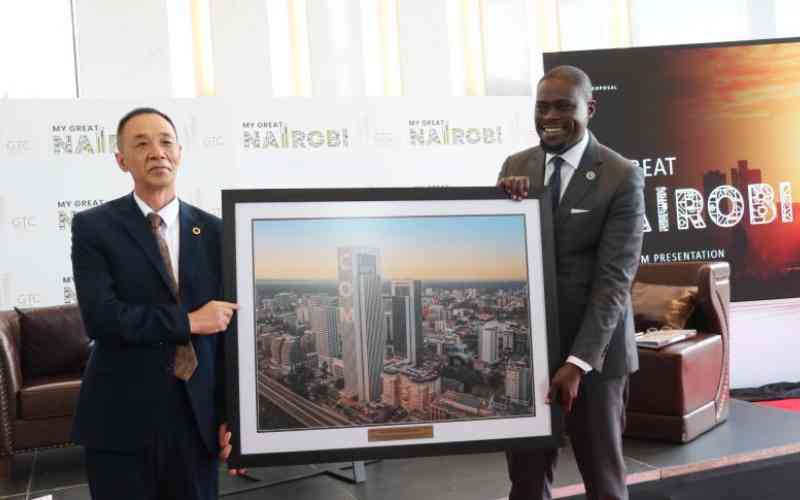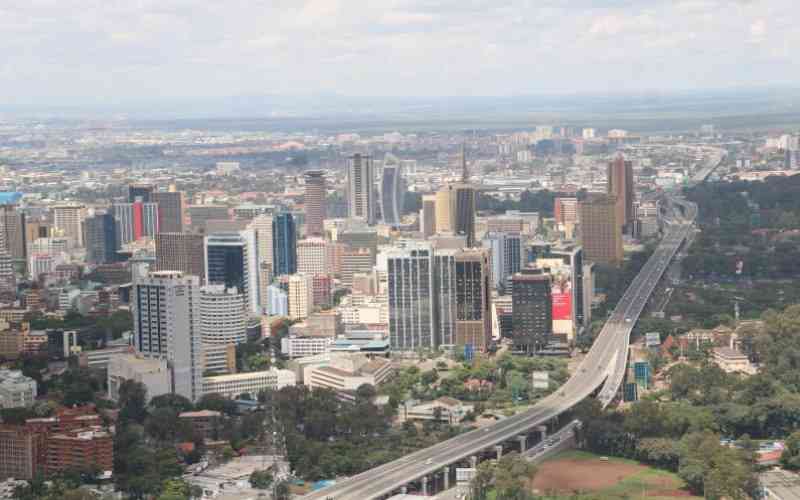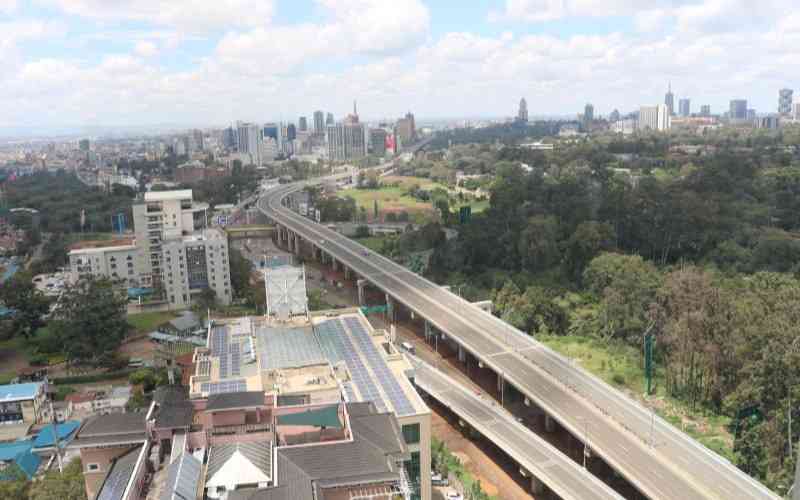
What does Nairobi mean to you? It depends, you may say. To some people, Nairobi is like that elephant that some blind Hindu men tried to describe. They had been told that an elephant was an animal that could trample one underfoot, scare others with trumpet calls, and carry huge loads and people.
The men were confused. Could a ferocious beast be as gentle as well? The only way to satisfy their curiosity was to get close to one, touch it and make their conclusions.
"It is big, smooth and solid like a wall," one said after touching the belly. "No, it is a giant snake," another said after touching the trunk. and yet another, after touching the tusks and the ears, said an elephant must be a swift animal that could fly using the big flaps with deadly spears in front.
So, once again, what is your Nairobi? The views might be as varied as the Hindu elephant. To those in the informal settlements, the city represents all that is wrong with our society while those in the leafy suburb will say the city is the most tranquil place on the planet.
The millennials and the Gen Zs will look at the city's vibe, its never-ending nightlife and the reverberating cacophony of the nganyas, or the multi-coloured matatus and their graffiti that has become a trademark of the city transport system.
Then some are always nostalgic. Those who remember the once 'green city under the sun'. When garbage trucks crisscrossed the city, from Karen to Kariobangi collecting any solid filth, they remember a time when water flowed from every tap in the city.
They recall stopping at a bus stop in Otiende and catching a No. 34 Kenya Bus Service to the airport, right on schedule. The good old days, they call them.
However, the debate is about to be settled once the results of a photo competition launched this Thursday by Nairobi Governor Johnston Sakaja are out.
The campaign dubbed My Great Nairobi will commemorate the evolution and development of Nairobi since independence and celebrate the city's rich history by showcasing its people, architecture, landmarks, road networks, rich culture and so much more.
The campaign will culminate with the setup of a photo gallery which will display the evolution of Nairobi from a small dusty town to the bustling cosmopolitan and modern city it is today, showcasing the history of Nairobi from the late 1800s to the present. The campaign will also include a photographer's challenge to recreate photos of Nairobi's streets, buildings and road networks with modern-day photography.
Photographers with the best images will be recognised with awards and honoured at the official opening event of the Nairobi Photo Exhibition Gallery whose partners include The Nairobi County, Kenya National Archives, National Museums of Kenya, Nairobi Gallery and the Mo Amin Foundation.
Sakaja launched the photo expo on the ground floor of what is now Kenya's, and one of Africa's tallest buildings, the Chinese-built 42-floor Global Trade Centre.
The crowd comprised a generation that calls Nairobi home, including the governor who was born a few kilometres from the venue.
There was nobody in the audience older than the city that was established in 1899 as a railway depot.
Few, if any, were even as old as Kenya, a country that turns 60 this year. Perhaps the current generation may not fathom that a postcard from Kenyatta International Convention Centre (KICC) was for decades the signature image of the city.
The guests sat in a building that dwarfs KICC. George Whitehouse and his retinue of railway engineers never imagined a building of more than two floors within the region that they had described as a "bleak swampy stretch of soggy landscape, wind-swept, devoid of human habitation of any sort, the resort of thousands of wild animals of every species".
Ronald Preston, one of Whitehouse's key men stated that "the only evidence of the occasional presence of humankind was the old caravan skirting the bog-like plain", the swampy long used as a watering point by the Maasai.
From the top floor of the 184-metre GTC tower, the city bears little semblance to the Nairobi of yesteryears.

It is difficult to make out KICC which has since been eclipsed by other skyscrapers. Below the towering structure along Chiromo Lane is the modern expressway that links the outer city limits together, nothing like Preston's old caravan track!
And there is more evidence of humankind than Preston and other founders of the city would ever have dreamt of. Over four million people call Nairobi home, a contrast to those who, as the governor stated, viewed the city as a transitory place, where one came to look for greener pastures while their minds were fixed on their upcountry hamlets.
There was no hotel when the railway happened in Nairobi. The Stanley, forerunner to the current Sarova Stanley was opened in 1902 (the same year this newspaper was established) by Mayence Tate.
Tate had no mattresses though she was ready to receive high-profile guests in her hotel in addition to providing hospitality to the 30 European settlers in Nairobi at the time.
She had to do with mattresses made out of old gunny bags and dried grass mowed from the nearby railway line and sewn together by Abraham Block, a Lithuanian Jew who had come here for business prospects.
In some months to come, the new tower in Nairobi will host the highest hotel on the continent, the JW Marriot and like other Five-star establishments in the city, you can be sure that there will be no grass-filled mattresses here.
Through the photo competition, Nairobians have an opportunity to be part of Nairobi's history and contribute to the creation of a lasting tribute to the city with Sakaja saying the initiative "comes at a time when Kenyans need to be reminded of the beauty and heritage of their country".
"The aim of 'My Great Nairobi' is to educate people on the city's history and provide an opportunity for the public to be a part of that history. This is not just a one-way exhibition, but one that will involve public participation by asking Kenyans to share their memories/memoirs and stories of Nairobi," he stated.
So now that everyone with a smartphone is also a photographer, start clicking and uploading up to three photos taken in Nairobi on the portal, mygreatnairobi.co.ke. You might just receive a top-of-the-range camera and accessories and be part of history, a history to redefine Nairobi.

 The Standard Group Plc is a multi-media organization with investments in media
platforms spanning newspaper print
operations, television, radio broadcasting, digital and online services. The
Standard Group is recognized as a
leading multi-media house in Kenya with a key influence in matters of national and
international interest.
The Standard Group Plc is a multi-media organization with investments in media
platforms spanning newspaper print
operations, television, radio broadcasting, digital and online services. The
Standard Group is recognized as a
leading multi-media house in Kenya with a key influence in matters of national and
international interest.



